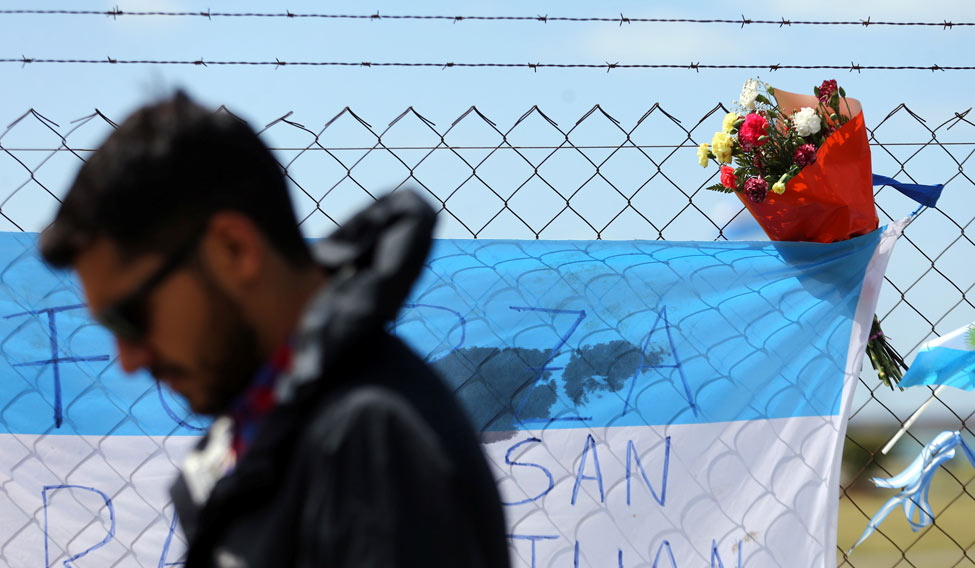From the window of a US Navy P-8A Poseidon airplane taking part in an international search for a missing Argentine submarine, the glistening vastness of the South Atlantic stretches in every direction.
Yet onboard the modified Boeing 737, the nine-man crew spends much of the flight bent in silence over tracking devices. They listen to signals sent by buoys deployed on the ocean surface and watch video from the plane’s heat-seeking camera on five sets of double screens at the center of the plane.
More than 30 aircraft and ships from Argentina, Britain, Brazil, the United States, Chile and other countries are participating in the effort to find the ARA San Juan submarine, which disappeared on November 15 with 44 crew members on board.
In all, more than 4,000 personnel from 13 countries are assisting the search, scouring some 500,000 square km (193,051 square miles) of ocean—an area the size of Spain.
“It’s great to be able to utilise everything we have—all the training we have, the equipment we have—in order to come down here to Argentina to help find this submarine,” said mission commander Lieutenant Zachary Collver, a 32-year-old pilot from Washington state.
However, hopes dimmed of finding the submarine’s crew alive on Thursday when Argentina’s navy raised the possibility the submarine suffered an explosion, after an international agency with listening posts to check for secret atomic blasts detected an unusual signal near where the vessel went missing.
Midway through its seven-hour flight, the US plane changed course, picked up speed and descended toward the ocean surface.
Collver alerted the crew that a satellite image had picked up “something” near the area where the submarine last reported its position, according to a witness aboard the flight on Wednesday.
The plane turned south toward the Patagonian city of Puerto Madryn, after taking off from an Argentine base in Bahia Blanca, some 650 km (400 miles) south of Buenos Aires. Data analysis would later show the object was just a big rock.
The episode was one of several false leads in the international search operation, which has involved more than a dozen boats but has not yet produced any solid clues about the fate of the missing vessel.
But the P-8A Poseidon crew insisted they would not diminish their search efforts.
“It’s rewarding to know we can help out the best that we can,” Collver said. It was the first time the Florida-based crew participated in an actual aerial search mission, rather than just a drill.
Argentina has thanked the countries that have participated in the search.
-Reuters | Over the south Atlantic





